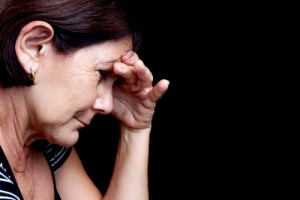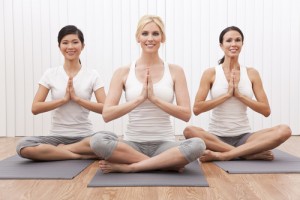I would like to introduce Elizabeth Carrollton, who wrote the post that appears below. While I’m not a medical person, I am happy to share any information that can affect the health of women in my age group. Thanks to the good folks at Drugwatch.com, including Jasmine McCarthy, for visiting my site and offering to share their expertise!
***
 In the United States, as many as 50 percent of women between the ages of 50 and 79 will be diagnosed with a condition called pelvic organ prolapse (POP). Diagnosis is even common in much younger women. As women move through menopause, their estrogen levels decrease. This decrease in estrogen reduces collagen production – causing connective tissues to weaken. In the case of pelvic tissues, this weakening can deplete the structural support that holds pelvic organs in place. If tissues weaken enough, pelvic organs will shift down toward the pelvic floor. While this condition is in no way life threatening, in its most severe form, it can be uncomfortable or debilitating. However, the majority of women with POP will only experience mild to moderate symptoms, and can often find ways to live with POP without the use of surgical intervention.
In the United States, as many as 50 percent of women between the ages of 50 and 79 will be diagnosed with a condition called pelvic organ prolapse (POP). Diagnosis is even common in much younger women. As women move through menopause, their estrogen levels decrease. This decrease in estrogen reduces collagen production – causing connective tissues to weaken. In the case of pelvic tissues, this weakening can deplete the structural support that holds pelvic organs in place. If tissues weaken enough, pelvic organs will shift down toward the pelvic floor. While this condition is in no way life threatening, in its most severe form, it can be uncomfortable or debilitating. However, the majority of women with POP will only experience mild to moderate symptoms, and can often find ways to live with POP without the use of surgical intervention.
Living with Pelvic Organ Prolapse
One of the most common treatments for women with moderate to severe POP is surgery. However, the American Congress of Obstetricians and Gynecologists, as well as the U.S. Food and Drug Administration have made it clear that surgical intervention for POP should only be used in cases where anatomical corrections are the only solution for debilitating symptoms.
Otherwise, women and doctors should rely on the most conservative treatments available to adequately reduce the symptoms. This is because one of the common surgical treatments for POP that uses transvaginal mesh devices. This vaginal mesh product has been linked to thousands of cases of serious and irreversible complications. In fact, multiple transvaginal mesh manufacturers have discontinued their products.
Conservative Methods for Treating Prolapse
- Lifestyle Choices. In addition to pregnancy and childbirth, smoking and obesity are also links in more severe cases of POP. Women should focus on eating a well-balanced diet, getting regular exercise, ceasing unhealthy habits, and maintaining a healthy weight target in order to reduce the strain on weakening pelvic tissues.
- Pelvic Physical Therapy. Kegel exercises can be done daily to strengthen the vaginal walls and the pelvic floor. Strengthening these muscles can help to prevent organs from prolapsing further. If a woman has been diagnosed with POP, or the condition runs in her family, she may want to seek a physical therapist for a list of other exercises which can help to promote pelvic floor strength. Electrical stimulation can also be used to manually exercise weakened pelvic floor muscles.
- Vaginal Pessaries: The American Academy of Family Physicians recommends the use of a vaginal pessary for women who have more moderate prolapse symptoms. These devices are custom shaped and fitted according to the woman’s body and symptoms. When inserted properly, and used consistently, a pessary is very successful at providing support for the pelvic floor, preventing organ prolapse, and reversing incontinence. Many women have found that vaginal pessaries prevent the need for surgical interventions.
While surgical intervention can be successful in treating severe cases of pelvic organ prolapse, where the uterus has begun to prolapse into the vagina, most women find that their symptoms can be managed using non-invasive and less risky treatments.
Elizabeth Carrollton writes to inform the general public about defective medical devices and dangerous drugs for Drugwatch.com.
http://www.acog.org/About_ACOG/News_Room/News_Releases/2011/Statement_on_FDA_Patient_Safety_Communication http://www.aafp.org/afp/2010/0501/p1111.html http://www.fda.gov/MedicalDevices/ProductsandMedicalProcedures/ImplantsandProsthetics/UroGynSurgicalMesh/ucm262299.htm#treatmentoptions http://www.fda.gov/MedicalDevices/Safety/AlertsandNotices/ucm262435.htm
